
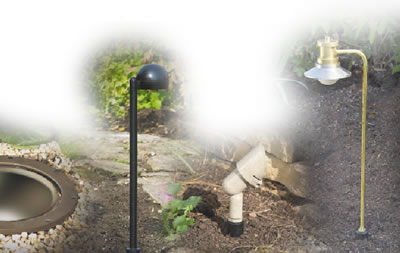
Once upon a time, outdoor activity was ruled by the sun. Nightfall chased people indoors ... keeping them there until dawn. Then the development of outdoor lighting technology began to expand horizons, giving people more freedom and safety to enjoy their outdoor environments after dark.
Landscape lighting has grown rapidly ever since, as emphasis on the environment and escalating crime rates have created more desire to light up the night. As a result, professionals have become increasingly skilled at "extending the day" with outdoor lighting design.
Lighting landscapes adds elements of beauty, safety and security ... in varying combinations, depending on users' needs and desires. With today's advancements in style and engineering, a well-designed nightscape literally makes two landscapes out of one.
In your lighting plan you may want to showcase a particularly attractive aspect of the client's property. It may be an interesting piece of art that needs a spotlight, or a flower bed illuminated. Maybe it's a pool or lily pond that deserves some added attention. Or you may just want to enhance the overall beauty of the property. Whatever aspect of the property you wish to bring to life, Philips Hadco accent lighting will help you beautify the environment.
Features like steps, rocks and shrubs can become obstacles or even safety hazards after dark. Instead of relying on flashlights or blinding floodlights, your clients can install path and step lighting to ensure safe passage from point A to point B. In fact, any change in elevation (steps, edges of a deck or terrace, etc.) should be illuminated for safety.
A well-lit house is the most effective deterrent to potential burglars. However, the glaring floodlights of the past are not as protective as once thought. Because, while floodlights create pools of light, they also create pockets of shadow – often close to windows – where thieves can hide. Philips Hadco fixtures not only beautify the property, but also fill in those areas of darkness, tastefully directing illumination precisely where it's needed most.
Philips Hadco's Low Voltage Lighting System offers the greatest versatility with up to 1,000 fixture combinations for every landscape lighting application. High performance LED and halogen lamps, available in many styles, produce greater lumen output and last longer than conventional incandescent lamping. Philips Hadco Low Voltage transformers include a multiple-tap voltage setting that allows for easy adjustment of load and distance variations. Fixture housings are constructed of the most durable materials that include die-cast aluminum, composite, stainless steel, copper, cast Bronze and die-cast brass. All painted finishes are applied through a special five-stage powdercoat process to retain their beautiful appearance for many years.
Why Low Voltage?
To give the landscape lighting designer ultimate flexibility, Philips Hadco offers a full line of low-voltage systems which are safe, affordable and easy to install.
These systems – which can be installed in a matter of a few hours – reduce the 120-volt normal electrical line to a harmless and more economical 12-volt system. There is no risk of injury from electric shock with 12 volts.
And, because the cable for these systems does not need to be buried deep underground, the process doesn't entail a lot of tedious work. Junction boxes and other bulky hardware are not required.
With the use of new, miniaturized lamp technology, low voltage fixtures are smaller than ever and easier to hide in the landscape.
![]() How to Design Your Landscape Lighting Plan >
How to Design Your Landscape Lighting Plan >
The Proper Mechanical Design for a Low-Voltage Lighting System
![]() Designing Cable Runs to Avoid Voltage Drop >
Designing Cable Runs to Avoid Voltage Drop >
(PDFs will open in a new window)
For projects requiring optimal performance, Philips Hadco's line voltage outdoor fixtures provide exceptional photometric quality and lamping flexibility. The line voltage system is designed to operate utilizing lamping options such as incandescent, Fluorescent or HID for covering a wide range of applications. Line voltage systems are ideal for large-scale landscape or commercial projects, with fixtures made of durable composite, or die-cast aluminum, brass or stainless steel, ideal for public settings. And with a variety of photometric choices, plus optional accessories such as concrete pour kits, lenses, louvers, barn doors, mounting stanchions, and more, Philips Hadco fixtures easily conform to the architect's vision.
Trees, Statues, Pools, Walkways... What features make up your landscape project? Which elements in an environment should be highlighted and which should be downplayed? The answers to those questions will determine the lighting fixtures and techniques you'll ultimately use.
Accent lighting is lighting that focuses attention on a particular object or area. It commands the viewer to take note of a certain subject within the landscape. Examples of accent lighting are spotlighting a statue, pathlighting a walkway or highlighting a flower bed with spread lights.
Fill- in lighting is background lighting. It ties the overall landscape picture together, creating a comfortable transition from one accented area to another. Some examples may be backlighting a tree, washing a wall or fence, or flooding a row of evergreens with soft light.
Downlighting may seem more natural because we are accustomed to the light of the sun and moon. In fact, most of the lighting that occurs naturally in life is from above. Office lighting, warehouse lighting, sports lighting and home lighting are all examples of downlighting techniques. Downlighting is also very efficient in that you get to use all the light.
Uplighting tends to draw more attention and is often more dramatic. Therefore, it is used for accent lighting purposes more often than downlighting.
Backlighting is used to silhouette a plant, tree, or structure. Many times the shape of a plant is more interesting than the detail. By gently lighting a wall or fence behind the plant, you identify the shape.
Often, it is easier to re-lamp a fixture on the ground rather than one mounted in a tree or on the soffit of a building. However, fixtures placed high and aimed down are less likely to be disturbed to need re-aiming. They also do not get covered by leaves, snow, etc. The decision of which to use is determined by the characteristics and lighting goals of each individual job.
There are a variety of lighting techniques that in combination create a beautiful and secure environment for anyone. For each technique there are fixtures that work better than others. Here are some techniques and the fixtures that best create the desired effects:
Effect: Displays a dark image of the subject by lighting a vertical surface behind the subject. Effective technique to show shape, but does not show color or texture of the subject. Accomplishes wall washing at the same time.
Tip: Choose a subject that is close to a wall and place the fixture out of sight behind the subject. Flood beam spreads or wall washers work the best.
Suggested fixtures: BulLytes, Wall Washers, Mini FloodLytes
Effect: Creates a shadow on a vertical surface by placing the fixture in front of the subject.
Tip: Best on open growth plant material. The closer the light fixture to the subject, the larger the shadow will be. General illumination lamps create a better effect. In other words, use a T-3 or bayonet base lamp instead of an MR or Par lamp.
Suggested fixtures: BulLytes, Wall Washers, Mini FloodLytes
Effect: Focuses an intense beam of light on a particular subject. Showcases focal points.
Tip: It's usually best not to light focal points uniformly or evenly. This gives the subject a washed out appearance and removes the detail. Statuary should be lit from overhead when possible. If you must light from the ground, try placing the fixtures further out and aim back at the subject. Two levels of light work well. For example, a spot on the facial features and a flood on the body creates a more dramatic presentation.
Suggested fixtures: BulLytes, Ingrounds
Effect: Lights a background scene to reflect it into a nearby body of water.
Tip: Place fixture between water and the scene behind the water. From the primary viewing area, observe what is reflected in the water in the daylight. Then uplight those items to achieve the same view at night. Avoid downlighting (including path lights) around water as the light source will be reflected in the water causing glare.
Suggested fixtures: BulLytes, Ingrounds
Effect: Enhances texture of a surface by positioning a fixture close to the surface and aiming the beam upward or downward.
Tip: Try grazing on brick, stone and stucco walls or any interesting masonry. Wide floods work best on walls or wide surfaces. Place fixtures 6" to 8" from the surface. When uplighting, put as much light as possible on the underside of the eave. This will reflect back a good amount of ambient light, many times sufficient to light sidewalks. Remember to aim the lamp with the horizontal beam pattern parallel to the wall. Don't forget the texture of tree trunks.
Suggested fixtures: BulLytes, Ingrounds, Mini FloodLytes
Effect: Gently illuminates a wall or fence to create a backdrop for the main focal points.
Tip: Avoid bright spots by positioning the fixtures 18"– 24" away from the wall.
Suggested fixtures: Wall-washers, WelLytes, Mini FloodLytes
Effect: Simulates the light of the full moon filtering through the foliage of a tree. Projects shadows on the ground. Also lights what is under the tree (paths, sidewalks, flower beds, etc.).
Tip: Mount with proper tree mount accessory. See section in this brochure for proper mounting methods. Always run wire or conduit up the non-viewing side of the trunk. Best mounting height is approximately 20'. Mount fixtures in open areas of the foliage to avoid hot spots. Aim straight down as much as possible to prevent glare. Consider composites because of their light weight.
Suggested fixtures: BulLytes, Mini FloodLytes, DownLytes
Effect: Downlighting from within the tree, casting shadows and lighting what is under the tree. Best mounting height no more than 10'.
Tip: For use with smaller ornamental trees to cast light around the base or through the tree.
Suggested fixtures: DownLytes, Micro BulLytes
Effect: An unnatural, therefore dramatic way of lighting trees and architectural structures. Highlights details on structures and can be used to repeat patterns to create interest.
Tip: For dense foliage trees, place the fixtures outside of the drip line and aim back approximately 45°. Open growth trees can be lit by placing fixtures closer to the trunk. In all cases, get light to the top of the tree. Since a lot of light can be lost with uplighting, take care to aim fixtures so you can recapture the lost light. (Large trees in the background, peaks of structures, eaves to reflect light back). Look for interesting details to highlight on architecture.
Suggested fixtures: BulLytes, Mini FloodLytes, Ingrounds
Effect: Combines simulated full moon light filtering through the tree and uplighting from within to illuminate the canopy. Creates a softer light on the trunk and keeps all fixtures off the ground.
Tip: Mount downlights on tree mount accessory 15–25' and use shrouds and/or louvers to reduce glare. Also consider using spread lens to widen the beam of the lamp. Mount uplights in the lowest forks of tree on tree mount accessory. Shrouds and louvers not necessary on uplights. Use wide beam lamps for all fixtures. Run wire up non-viewing side of trunk.
Suggested fixtures: BulLytes
Effect: Identifies signage after dark: entrances to sub-divisions, country clubs, office complexes, and small shopping centers.
Tip: Choose optics that complement the orientation of the sign. Wide floods for horizontal signs and bulLytes or ingrounds for vertical signs.
Suggested fixtures: BulLytes, Mini FloodLytes, Ingrounds
Effect: Illuminates and identifies water in ponds and water features.
Tip: Water should "look" clean enough to drink. Avoid lighting still, stagnant water with white light. Use colored lenses if water is not clean, or to create different atmospheric effects. Place light fixtures under objects or plant material in the water for interesting effects (lily pads, boulders, art, etc.). For a different approach, light material behind the pond to create the mirror effect and leave the pond dark.
Suggested fixtures: Underwater
Effect: Creates dramatic effects of water movement in fountains and water features while enhancing the structure of the fountain.
Tip: Water must be clean or moving. In most cases it is better to light "through" water than "at" water. Allow the water to fall directly on the fixture. If possible, try lighting tiered bowl fountains from overhead. Otherwise, each bowl should have a fixture in it. Avoid overlighting and lighting evenly around the structure as this tends to wash out the detail.
Suggested fixtures: Underwater, BulLytes
Effect: Creates symmetrical patterns of light for illuminating walkways, steps, etc. Used primarily for navigation purposes.
Tip: By lighting only the entrance to a walkway, any turns and all changes in elevation, you may avoid the runway look and still accomplish the task. Placing fixtures near plant material can create shadows and interest rather than just lighting the hard surface.
Suggested fixtures: PathLytes (Path Lights), SpreadLytes, Beacons
Effect: Low-level, evenly dispersed illumination to highlight plants, flowers, low shrubs, and ground cover.
Tip: Place shielded fixtures over low plant material, boulders and plant beds. Partially shielded fixtures may be used in deeper foliage and the additional light will backlight greenery.
Suggested fixtures: PathLytes (Path Lights), SpreadLytes, Beacons, Underwater
Effect: Technique of mounting fixtures in trees or on structures. Floods will broadcast light over a wide area creating general ambient light. Spots will dramatically identify focal points. Extremely efficient method of lighting – which means you can often use fewer fixtures. Very natural looking.
Tip: Look for items of interest on the ground that you want to light, then look up for places to mount and conceal fixtures. Select proper beam spreads for what you want to accomplish. Use accessories like spread lenses, louvers, and shrouds to maximize effects and reduce glare.
Suggested fixtures: BulLytes, Mini FloodLytes, DownLytes
Effect: Fills in areas of darkness where intruders could hide. The right combination of low-level lighting in the landscape will improve both security and appearance.
Tip: Effective residential security lighting is not prison yard lighting. The goal is to be able to see movement on the property. This can be accomplished best with lower levels and more sources rather than one or two bright sources. Avoid glare.
Suggested fixtures: BulLytes, Mini FloodLytes, Ingrounds, DeckLytes, StepLytes, PathLytes (Path Lights), SpreadLytes, Beacons
Effect: Lights traffic areas for safety while adding beauty to the steps.
Tip: Every step must be illuminated and visible. Mount fixtures in step risers, underneath railings, or on vertical posts. All changes in elevation and terraces should be lit for safety.
Suggested fixtures: DeckLytes, Deck Post, StepLytes
Effect: Illuminates deck floors and steps while enhancing design.
Tip: Consider placing fixtures under built-in benches for a clean, inconspicuous look. When placing fixtures under handrails, mount fixtures high enough for good light distribution but be careful not to see the source when seated. Run cables under the deck to reduce clutter.
Suggested fixtures – DownLytes, DeckLytes, Deck Post
| Technique | Lighting Choices |
|---|---|
| Deck Lighting: | DownLytes,DeckLytes,Deck PostLights |
| Downlighting: | Bullets,Mini FloodLytes, Small FloodLytes, Large FloodLytes,DownLyte |
| Fountain Lighting: | Underwater |
| Grazing: | Bullets,Ingrounds, Small Ingrounds, Large Ingrounds |
| Moonlighting: | Bullets, Large FloodLytes,Mini FloodLytes, Small FloodLytes, DownLyte |
| Pond Lighting: | Underwater |
| Security Lighting: | Bullets,Mini FloodLytes, Small FloodLytes, Large FloodLytes,Ingrounds, DeckLytes, StepLytes, PathLytes (Path Lights), Bollards Beacons, Small Ingrounds, Large Ingrounds |
| Shadowing: | Bullets,Wall Washers,Mini FloodLytes, Small FloodLytes, Large FloodLytes |
| Sign Lighting: | Bullets,Mini FloodLytes, Small FloodLytes, Large FloodLytes,Ingrounds, Small Ingrounds, Large Ingrounds |
| Silhouetting: | Bullets,Wall Washers,Mini FloodLytes, Small FloodLytes, Large FloodLytes |
| Spot Lighting: | Bullets,Ingrounds, Small Ingrounds, Large Ingrounds |
| Spread Lighting: | PathLytes (Path Lights), Bollarda, Beacons, Underwater |
| Step Lighting: | DeckLytes,Deck Post Lights, StepLytes |
| Up Lighting: | Bullets,Mini FloodLytes, Small FloodLytes, Large FloodLytes,Ingrounds, Small Ingrounds, Large Ingrounds |
| Walkway Lighting: | PathLytes (Path Lights), Bollards, Beacons |
An ice blue lens enhances the colors of evergreen foliage and also "cools off" a halogen lamp like the MR16, giving it the appearance of moonlight.
When installing low voltage spread lights in a bed of annual flowers, use the S6 Adjustable stake so the fixture can be raised as the flowers grow.
To help conceal the light source, use a cutoff louver such as the ML1 for the BL616 or the ICG16 for the IL116.
To reduce glare, adjust the shroud on bulLytes.
To avoid poisoning trees, use only stainless steel or cadmium-plated steel fasteners when mounting fixtures.
When attaching low voltage cable to a tree, use a wire tie with a grommet end. This allows the cable to flex slightly off the tree, preventing damage to both.
See finishes and material at the bottom of the page.
See Hadco Photometric Data >
(PDF will open in a new window.)
Photometrics for MR11, MR16, PAR36, PAR20, R40 and R20
Learn how Wide the beam from each bulb can spread.
For ultimate flexibility in large-scale or commercial projects, count on Philips Hadco accent products to give you all the options. They engineer fixtures to create possibilities, not to limit them. Hadco's accent lights can accommodate incandescent, Fluorescent or HID lamping. You can also rely on Philips Hadco to offer the control you need, from integral stepdown transformers to a variety of shroud styles. And the selection of remote ballasts gives you the freedom to place fixtures virtually anywhere in your design.
Tree lighting. Moon lighting. Spot lighting. Grazing. You've created the scene. Now it's time to light it up. Downplay. Accentuate. Soften. Enrich. BulLytes, floodLytes, wall washers, downLytes... the right size, the right combination, the right finish. For every effect you can imagine, the keys are here to unlock the beauty of your landscape with light.
With floodLytes as small as 20 watts, as large as 300 watts and everything in between, Philips Hadco gives you the flexibility to install just the right illumination in any application. Whether your goal is sign lighting or security, Hadco gives you the lamping options and accessories you'll need to get the job done.
Whether used to graze walls or uplight features, inground fixtures are powerful, versatile tools for expressing your design vision. They'll deliver the illumination you need; yet blend seamlessly with their surroundings. And Hadco's flush mount fixtures integrate so completely, people can even walk on them. With a generous selection of trim rings, rock guards, lenses and louvers, ingrounds will harmonize with almost any terrain. And properly installed, they'll provide years of light to your landscape.
Inground lighting provides a low profile light source, creating a dramatic effect that brings the subject alive. Hadco's inground products do exactly that, and do it well. Designed to blend into a variety of settings and terrain, ingrounds are available with your choice of trim rings, rock guards and accessories. Properly installed, they'll guild your landscape for years.
Hadco's line voltage stepLytes come in a variety of shapes, sizes and lampings for a variety of applications. Put strong emphasis on exterior features, such as the architectural detail of a grand entryway. Or, for low-light environments such as theatres, LED stepLytes allow you to design for safety while preserving atmosphere.
Shining beauty. Radiant safety. Glowing ambiance. From decorative to utilitarian and everything in between, Hadco's step and deck fixtures give you the power to create outdoor living spaces people will treasure. Broaden the boundaries and make the outdoors outstanding.
Hadco's line voltage PathLytes (Path Lights), bollards and beacons unlock the options for all types of residential and commercial applications.Forms and functions finely suited for all types of environments: from public courtyard and university campus to secluded backyard promenade in a variety of finishes and materials to ensure that walkway fixtures will blend into your environment or stand out and make a statement.
Perhaps as important as the destination: the lights that show the way. From spun solid copper that patinas with age to minimalist cast Bronze, from Art Nouveau to Arts and Crafts, Hadco's PathLytes (Path Lights) harmonize with a broad range of architectural styles. If you're not sure about the ideal placement, easy-to-understand recommended spacing diagrams make it easy to decide.
Add brilliance to your large-scale fountain or water feature with line voltage underwater fixtures. Made of nickel Bronze, they're practically indestructible – designed to last, not leak.
Liquid luminescence. Enchanting dimension. Water features bring elemental beauty to almost any environment. Our underwater lights illuminate water features safely and strikingly. And our selection of colored lenses gives you the freedom to explore even more dramatic effects. From pond to fountain to waterfall, the glow of underwater lighting makes every breeze – every ripple – a detail remembered.
Just as important as a vast selection of fixtures, Philips Hadco accessories give you all the options you need to finish the job with safety and confidence. With a vast array of stakes, junction boxes and other mounting accessories. Low Voltage Accessories include transformers and wide variety of stakes, connectors and mounting canopies. Hadco has the right accessories to implement almost any Installation: you can imagine.
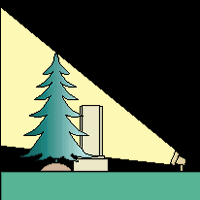
Engaging architecture and statuary in and around your landscape can be spotlighted with a focused beam of light to set them off after dark. Best results are achieved when the fixture is mounted overhead, thereby minimizing glare and usually providing a direct light path to the structure being accented.

Up-lighting provides an excellent way to highlight the beauty of trees, especially flowering types. Place fixtures on outside of dripline if the foliage is dense. Place fixture close to the trunk if the flowers are spread throughout the canopy and/or the foliage is light. Down-lighting can be used to light up flower beds or other areas of interest around the base of a tree.
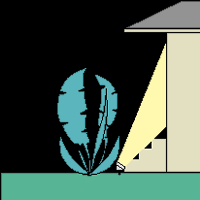
Lighting the wall behind this tree accentuates its interesting shape and branch structure.
Trees and plants having unique branch structure create an engaging appearance when silhouetted. This technique is produced by placing a fixture directly behind the subject and pointing it at a vertical surface. The dark image of the subject is displayed when the observer is viewing from the foreground. Silhouetting is good to show off the shape of an object, but not the color or texture.

This method is used primarily to create a symmetrical pattern of light for navigation. Fully shielded fixtures may be positioned along landscape cutouts and pathways to add safety, security and visibility at night. Partially shielded lights may be positioned behind taller greenery, allowing light to filter through onto paths and to distribute more illumination in and around the landscape.
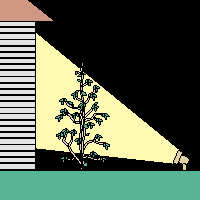
This technique casts a shadow on a vertical surface by placing a fixture directly in front of the subject and aiming the light through it. The shadow can be enlarged by positioning the light closer to the subject. This is a great method of showing off the unique branch structure of unusual greenery and adds security to your home as well.
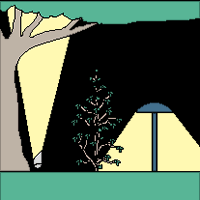
Used to produce low-level, evenly dispersed illumination for flowers, shrubs, and other types of ground cover. Fully shielded lights work best to reduce glare. However, partially shielded fixtures may be positioned in deeper foliage landscapes where the additional light will serve to backlight greenery. Spread lighting may also be used underwater to enhance an ornamental pond.
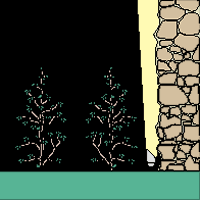
Accomplished by positioning a light within six to eight inches of a facade and aiming it 90 degrees vertically. This approach works beautifully with the texture of stone or brick retaining walls, privacy fences, building facades, chimneys or anywhere else shadow and light may enhance the surface quality of masonry materials.
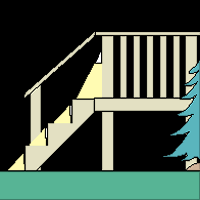
Brightening up decks and patios with fixtures that can be installed beneath benches, as recessed lights in the risers of steps, and as surface lights on vertical posts and underneath railings. These applications contribute to safety as well as security by illuminating changes in elevation and effectively lighting up deck drop-offs or edges, allowing visitors to negotiate stairways with ease.

By placing a fixture in a tree and aiming it downward, art imitates nature by creating the tranquil appearance of light filtering through the branches on a moonlit night. When using this technique, fixtures should be hidden and positioned as high as possible. A light may be positioned on the ground as well, pointed upward in order to illuminate the tree itself.

Light on all walls of the home serves to minimize hiding places for unwelcome visitors.
An effective deterrent against crime including theft and vandalism. Illumination for areas where intruders can hide may be achieved, without harsh glare, by positioning a combination of low-level lighting or accent lighting in and around the landscape of your home. This technique allows the surroundings of your home to be enhanced as well as safe and secure.

design42 New Media Web Design
1804 Meadowbrook Terrace
Hendersonville NC 28791